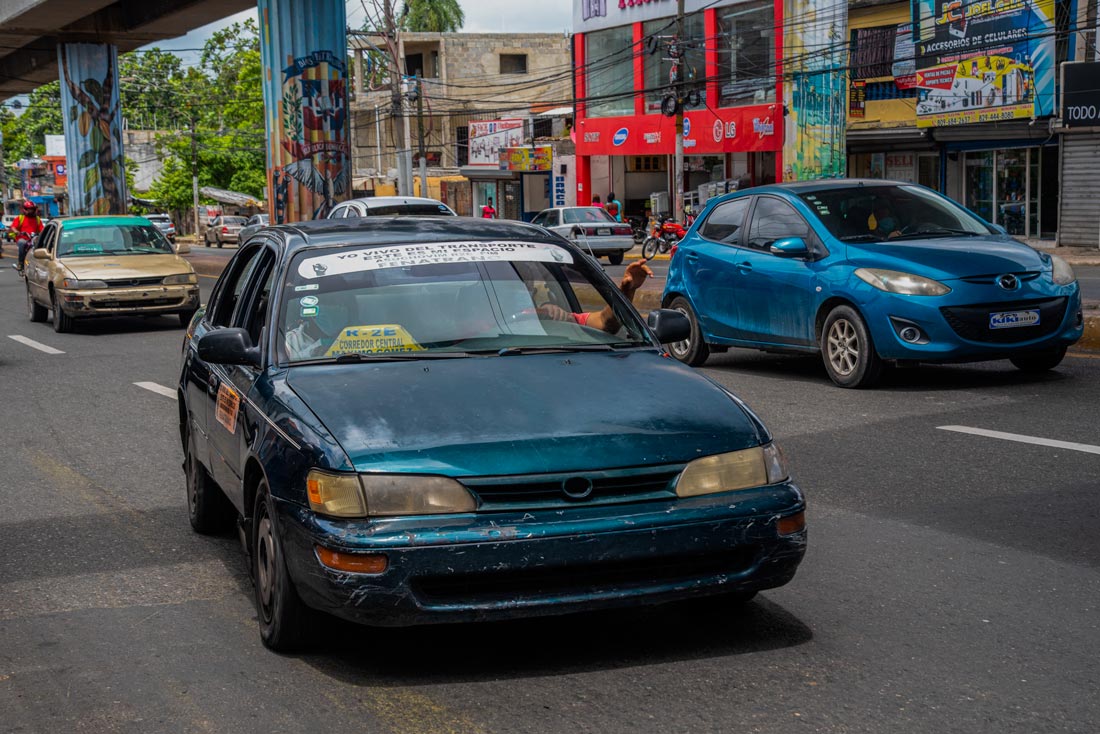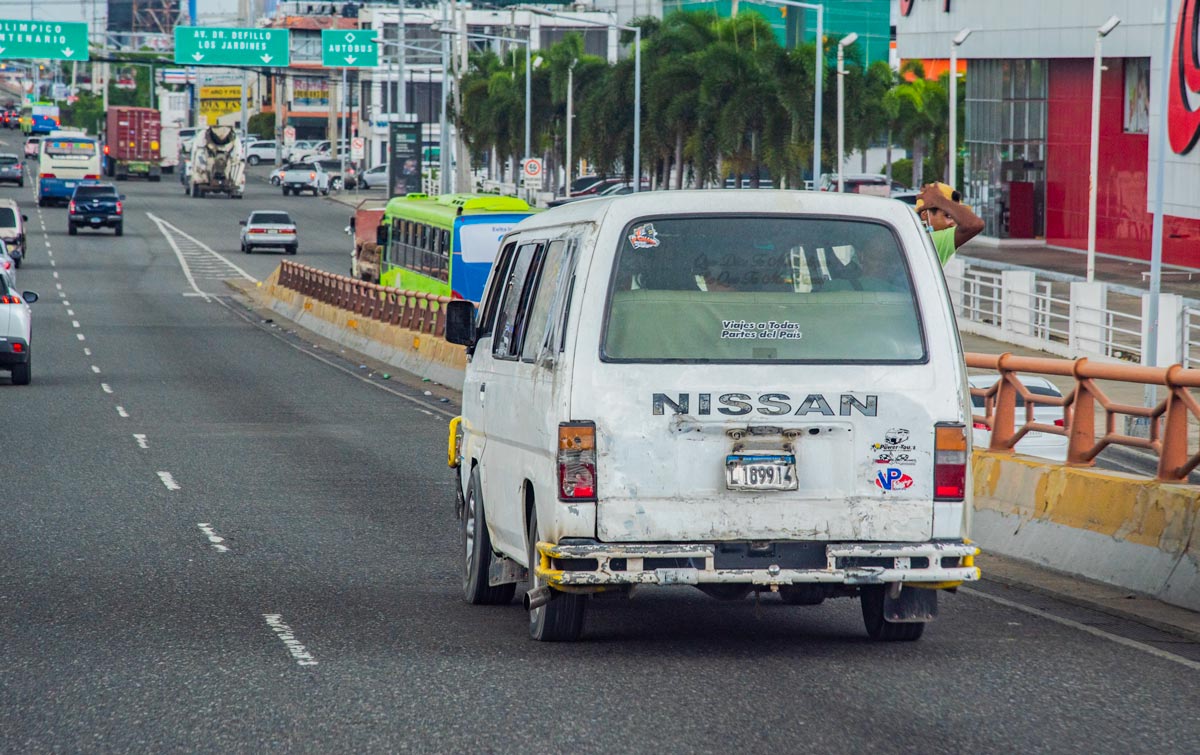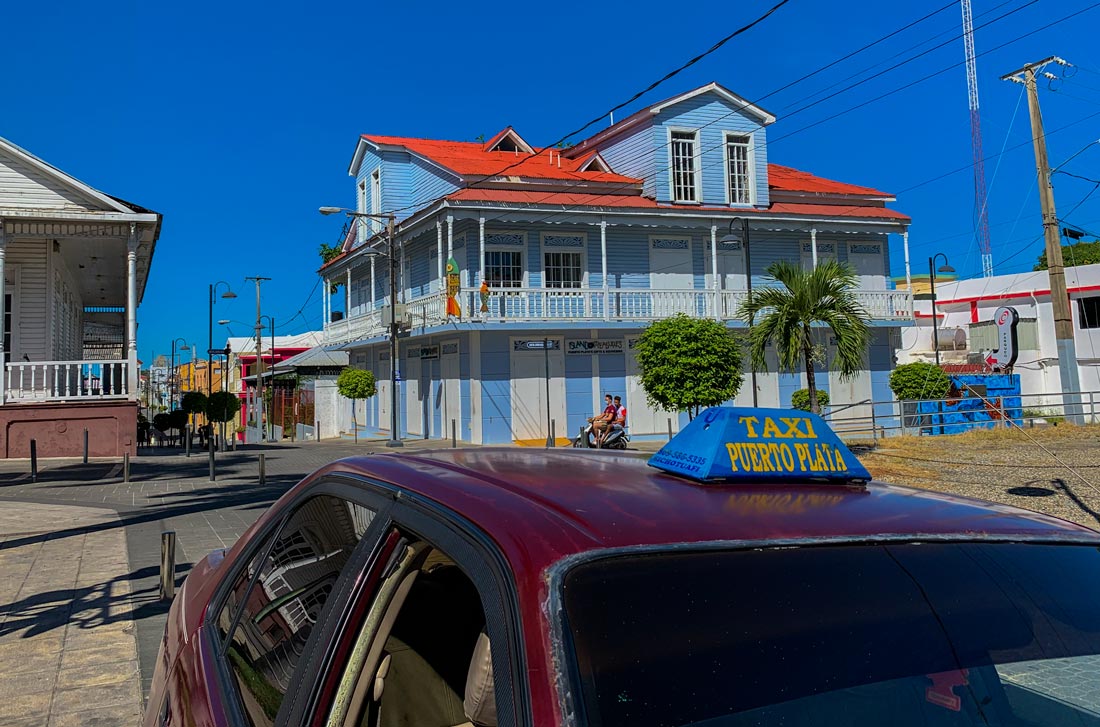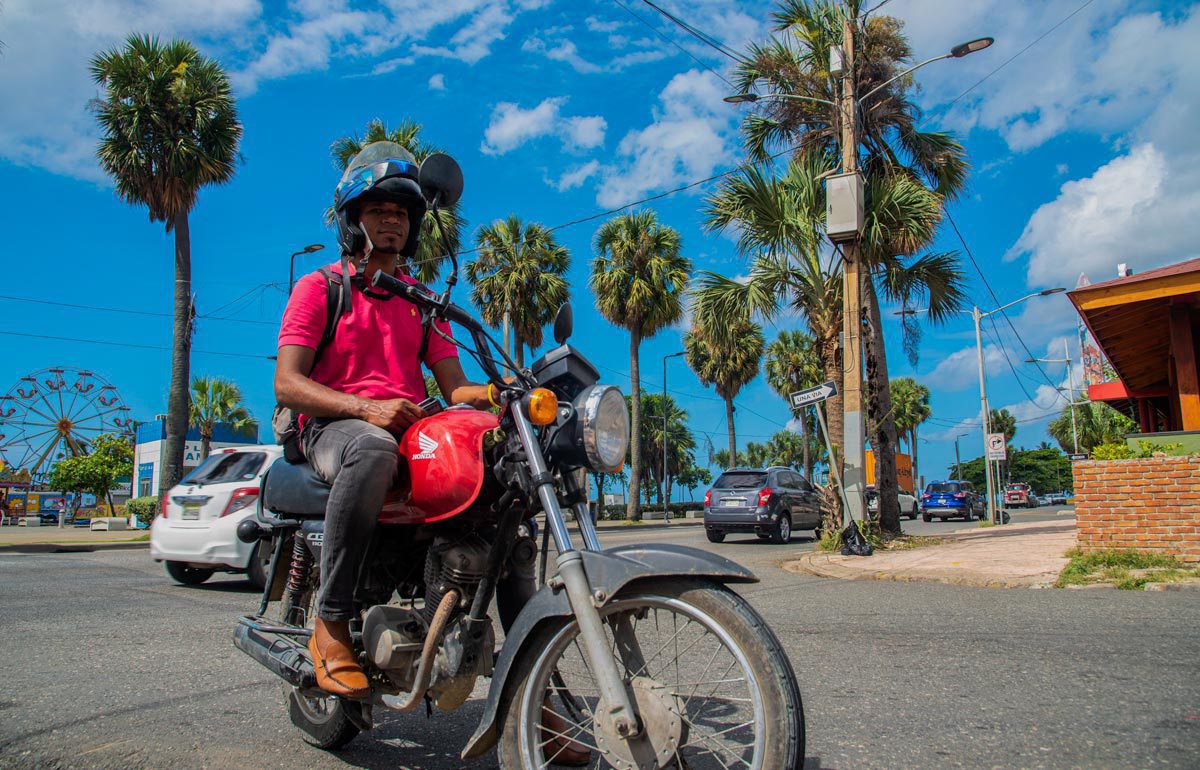Getting Around
Public Transportation In The Dominican Republic
Motorcycle taxi (Motoconcho) in Santo Domingo
Photo: Massiel Beco
So you're ready to get out and about? That's so exciting! There's something about finding your own way, I know. It's adventurous. It's the smell of pure freedom (and diesel fumes).
Let's get out there!
Share
Transportation in the Dominican Republic
Transportation is very accessible in the Dominican Republic. The routes are many and include cars (carros publicos), guaguas (mini buses or vans), cross country buses, taxis and motorcycles (motores). Uber recently joined the scene, too. Even if you choose to stay at a remote bed and breakfast in the mountains, you'll make it there - maybe on a motorcycle, but you'll make it.

Carro publico in Santo Domingo
Photo: Massiel Beco
Public Cars (carros publicos or carritos)
Public transportation runs on all main thoroughfares, even in some small towns. You can find these streets on your phone with Google Maps. Just turn on your location, look for the main venues close to you, and plan your route.
Ready?
Only get into cars that have signs with route letters stuck to the side. Flag one down by pointing your finger out towards the pavement. Then, loud and clear, ask the driver “Va pa' _____?" Insert the name of main street close to your destination. Or ask for your destination, if it's on the same street, by asking "Va pa' [eg. Zona Colonial]?"
You'll rarely have to wait more than 10 minutes unless you're attempting to travel during rush hour.
Public cars almost always look full, even outside of rush hour. But they carry four people in the back and two in the front, besides the driver. Just squeeze in quickly. Be prepared to sit on one hip!
Want to pick up on some helpful insider tips and tricks about getting around in the DR? Read our guide to Dominican culture and customs.

A Guagua in Santo Domingo
Photo: Massiel Beco
Guaguas
Public cars can usually only squeeze in two more passengers. So if you're traveling in a group, look for a guagua. These can be anything from old buses to minivans. They don't always have signage. Talk to the fare-keeper.
In the case of the north coast (Zona Norte), guaguas clearly bare the names of each destination across the top windshield - like the famous "Puerto Plata - Sosua - Cabarete - Rio San Juan" minivans, which locals prefer.
You should expect to pay $100 - $150 pesos per person, from one municipality to another.
Carry Change
The usual fare for a car or a guagua is 50 pesos (about 1 US dollar). Take a pocketful of change with you for contingencies. You’re expected to pay when you board, and to tell the driver where you’re getting off.
Read our brief guide on cash, costs, and money-saving tips in the DR, and get the latest on how to stretch your peso.

Bus going from Santo Domingo to San Cristobal
Photo: Massiel Beco
Cross-country buses
If you’re traveling to another location in the Dominican Republic, the most popular private bus company is CaribeTours. Caribetours buses go almost everywhere.
Tickets can be purchased at the bus terminals - just go to the nearest bus terminal and ask for a ticket for the next bus to your destination. The ticket will tell you what time the bus leaves.
And if you plan on traveling to Haiti, Caribe tours offers transfers from Santo Domingo, to Port-au-Prince and Cap-Haïtien.
Other notable bus companies
Aetra (from Santo Domingo - Santiago de los Caballeros)
Expreso Bavaro (minibus from Santo Domingo - Punta Cana)
Metro Bus (Santo Domingo - Santiago de los Caballeros - Puerto Plata - Sosua - Port-au-Prince in Haiti)
Javilla Tours (minibus from Santiago de los Caballeros - Puerto Plata and many others)
Note: Almost all major Bus company web pages can be translated into english.
Cross-country bus fares range from 100-600 pesos (US $1.90 - $11.30*), depending on your route.

Taxi in Puerto Plata
Photo: Carlos Karlos
Taxis
There are probably a hundred cab companies in the Dominican Republic. You'll recognize them by the small sign on top of the car.
The front desk at your accommodation will call a cab if you ask. Request one with air conditioning and inquire about the fare over the phone to avoid being overcharged later. Typical fares cost anywhere from 250 - 700 pesos (US $4.70 - $13.20*), more if you make more than one stop.
If you’re making a round trip or planning to continue your journey, it's often easier to call the same driver again than to find another taxi. Ask the taxista for his card when he drops you off. If you will only be a short while, you can ask your driver to wait - "Esperame, por favor." For a 10 minute wait, he will charge you about 100 pesos extra (US $1.90*).
If your driver seems flexible, you can ask him about a daily rate. Tell him the places you would like to go and he will quote you a fare from 1000-3000 pesos cash (US $18.90 - $56.50*).
Having a chauffeur that waits for you is just plain awesome, but it’s best to pay him after services rendered.
Uber
Uber is like having a chauffeur, only not. They don't wait for you, but they usually arrive a lot quicker than a taxi. You won't have to haggle in Spanish, and payments are automated, making it a great way to get around if you run out of pesos.
To use Uber, just download the app, add your card number, and enter your destination. You'll see the cost before you confirm the ride. After this, you'll see the driver's face and the make of car to expect. Check both before getting in the car.
Uber is a fraction of the cost of a taxi and runs at all hours of the day and night. Depending on your destination and the number of your group, Uber can even work out cheaper than public cars.

Motoconcho driver in Santo Domingo
Photo: Massiel Beco
Motorcycles (Motores or motoconchos)
Motores or motoconchos are single-passenger rides that can transport you beyond the reach of the public car route. Fares start at 50 pesos (about 95 US cents). Motores zip in and out of traffic, which can be scary, but they suffer very few accidents. To find a driver, look for riders wearing reflective or other eye-catching vests. You’ll see them congregated near busy intersections.
Once you ditch the other forms of transportation to zip around behind a motorcycle driver, you may as well apply for Dominican residency. Have fun!
*Note that all indicative costs in US dollars were accurate at the time of writing based on an exchange rate of US $1 = 54.69 DR pesos
Written by G. Abdullah.
Published July 2021
(Updated April 2022)
Looking for Some Cool Things To Do?
Categories
[categories_for_post id='article-related-categories']
Tags
[tags_for_post id='article-related-tags']
Share
Subscribe to our newsletter
Get more travel inspiration, tips and exclusive offers sent straight to your inbox
[yikes-mailchimp form=”1″]
